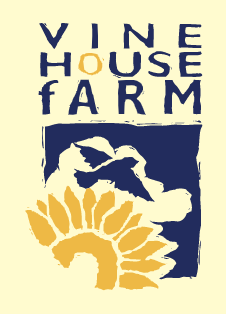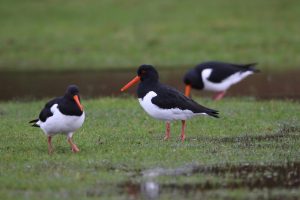
The cool unsettled weather continued until 20th July, which was 36 days after St Swithin’s day, but the month ended with some good warm weather. Despite what appeared to be a wet first half of last month, we have only recorded 30mm or 1.3ins of rain for August. We’ve only had two cooler Augusts in the last 20 years, but in the previous 20 years there have been 13 Augusts that were cooler than this August.

We finished the wheat harvest on 24th August, about a week earlier than normal. Yields have been a good average with a lot of crops yielding just over 4 tonnes per acre, or 10 tonnes per hectare. All our bread making wheats were harvested first, so there shouldn’t have been any quality lost from them when they were standing in the field.
It’s not been a good year for spring barley crops; they’ve not done so well and have yielded a miserable 2 to 2.5 tonnes per acre. Conditions have to be just right for spring crops, as they have to start growing as soon as they are sown. An autumn sown crop has more time to put roots down and get ready for growing in the spring. These crops nearly always yield more than spring crops, which is why there are so many crops sown in autumn but they don’t form a proper rotation. This causes arable farmers problems with blackgrass, as most farmers haven’t had a proper rotation for the last 40 years.
All the harvested winter barley left the farm in July. We grew it as feed value, the lowest quality, so no danger of any rejections. Spring barley is a bit different, there could well be a premium on the variety we have grown, so we have arranged for it to go to Camgrain. This is a farmer-owned co-operative, who will be able to mix or blend it with other farmers’ barley, send it to the correct destination and get a bigger premium.
We have to pay a few £s/tonne for them to do this, but we feel we will be better off in the long run.
Crops of red millet and canary seed have been sprayed to kill them off, so that we can harvest them earlier than we would have, if left to naturally die off. By the time you read this we would hope to be harvesting them. White millet follows a few days later.
We have been taking sample digs from our potato crops over the past month. Those that are destined to go to supermarkets must not get too large as they will not pay us for any that will not go through an 85mm hole. When we find a few getting towards that size, we kill them off.
The potatoes that are grown to make chips at McCain’s factory can get larger than 85mm. Unfortunately, we can’t put the oversized supermarket potatoes in the McCain’s loads as they are a different variety and would show up. This means the whole load would get rejected and we would be billed for transport and be left with all the potatoes. We have planned our potato harvesting to start around 12th September which will continue 12 hours a day, 6 days a week. If we were to be able to harvest everyday, we would be finished by the middle of October but no doubt we will have some wet days and maybe a breakdown or two, so the harvest could drag on until the end of October.


All the Tree Sparrows finished nesting by 15th August. My grandson Tim and I have ringed over 1,000 Tree Sparrow nestlings this summer and have only been able to do so because the adults have had a surplus of food.
The combine harvest has now finished for most farmers, so hedges and dyke sides are being trimmed. What should be a time of surplus food for birds on many farms sadly isn’t. Combines are now very efficient and leave very little behind and the machines that trim hedges smash the trimmings and fruit to a pulp. I will continue to feed the Tree Sparrows and start feeding other birds down the farm by the end of October.
We have had two pairs of Swallows in the yard this year and they left the yard around 25th August, only having had one brood each. This is the first time they have only had a single brood and I should think they have left earlier than usual because they have run out of food. We have no farm animals on the farm here and Swallows live on flies around farm animals.
On 31st August I went to see a friend of mine, Chris Knights, just south of Swaffham who has done a lot of work in increasing Stone Curlew numbers. The Stone Curlews have been very lucky in that there are many fields of outdoor pigs on the sandy land in Norfolk. The pigs have increased soil invertebrates through their excrement, which have provided the Stone Curlews with a surplus of food and so increasing their numbers. Stone Curlews are a species that migrates to Africa, south of the Sahara, but they have so much food in Norfolk a few of them haven’t even bothered to migrate, and now overwinter there.
In other newsletters I have talked about how well Buzzards, Kites, the Crow family, Foxes and Badgers are doing from a surplus of food. Wood Pigeons are another species that has a surplus of food, so clearly from these examples a species will increase in numbers if it has a surplus of food. It is not quite as simple as that though, as there is predation and most of those birds are certainly nibbling away at our ground nesting birds.
Humans are responsible for the large decline in insects with modern day farming and agricultural practices, alongside the loss of natural habitat. This has caused a decrease in so many birds that rely on insects to feed their young. The population increase of so many of the larger predatory birds and the releasing of so many pheasants and partridges makes one wonder what the populations of birds will be like in 20 years time.
Talks, Events & Walks
Locally we have the Deepings annual ploughing match which takes place on Saturday 28th October. A good day out to see local agricultural skills in action



